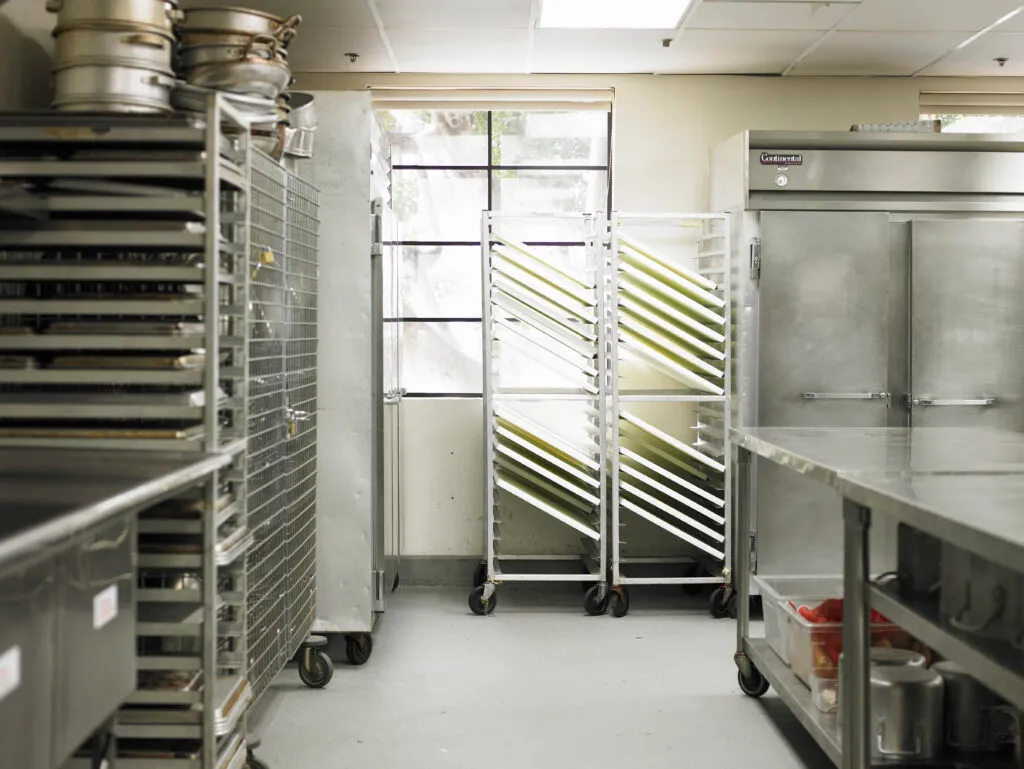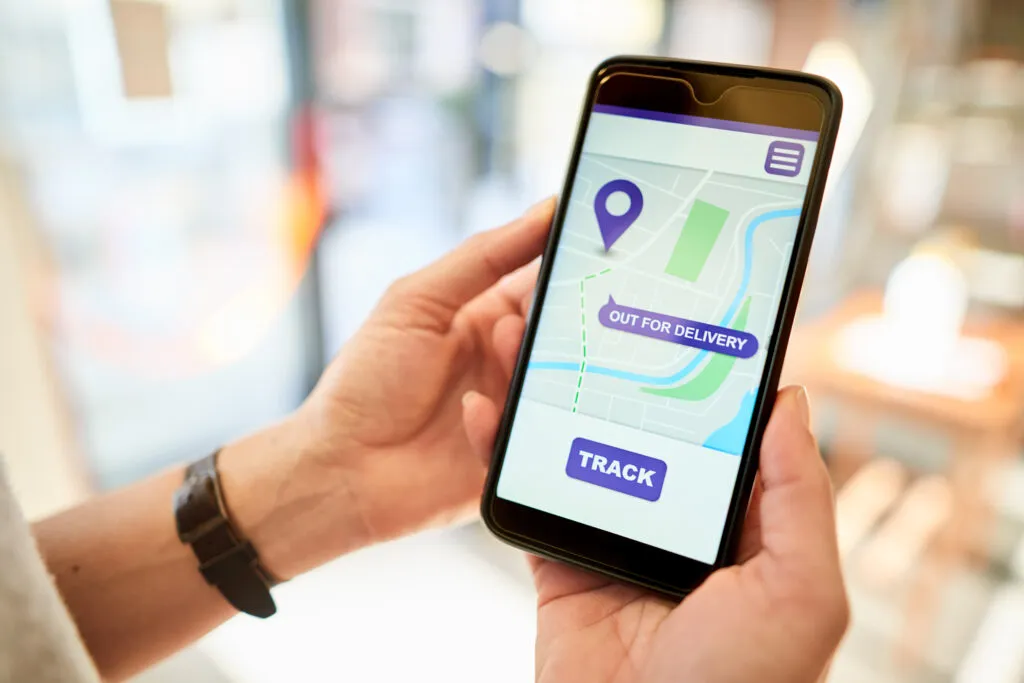
Get home early with RoadWarrior.
Enter your stops, optimize your routes, manage your team – quickly and efficiently.
Try RoadWarrior free for 7 days
Try free for 7 daysA ghost kitchen, also known as a delivery-only restaurant, dark kitchen, or shadow kitchen, is a concept that offers professional food preparation for restaurant-quality meals, but without a dine-in option. Instead, customers can only get their food delivered to their doorstep. This trend has been disrupting the restaurant industry for over a decade, but it gained even more popularity during the COVID-19 pandemic. Now, even big restaurant brands are ditching storefront restaurants and getting into the ghost kitchen game.
How Do Ghost Kitchens Work?
Ghost kitchens operate by preparing food for customers in a space that doesn’t offer any public dining access. They can have their own brick-and-mortar kitchen or share a space with other ghost kitchen owners, which helps cut costs. Additionally, some ghost kitchens rent shared kitchens or sublease space in existing restaurant kitchens.
To reach customers, ghost kitchens often partner with delivery apps like Uber Eats, GrubHub, and Postmates. These platforms allow customers to easily order from ghost kitchens and have their food delivered right to their doorstep. Alternatively, some ghost kitchen models rely on their own in-house delivery teams for last-mile delivery.
Benefits of Starting a Ghost Kitchen
Starting a ghost kitchen comes with several advantages:
-
Cost savings: Ghost kitchens save money on staffing since there’s no need to pay service staff or run a dining room. Additionally, they can cut real estate costs by setting up in cheaper locations outside of city centers where commercial real estate prices tend to be high.
-
Focus on the food: Without the need to worry about issues like dining room decor and managing front-of-house staff, ghost kitchens can devote more time and energy to what matters most – the food.
-
Cater to a larger audience: Unlike traditional restaurants with a limited capacity, ghost kitchens have the potential to cater to a larger audience since they are delivery-only. This allows them to reach more people and increase their customer base.
However, it’s important to consider the drawbacks of starting a ghost kitchen as well:
-
Customer retention challenges: Since ghost kitchens rely solely on their food to win over and retain customers, customer retention can be a challenge, especially in a market flooded with delivery options. Building a strong online reputation and managing customer reviews is crucial.
-
Delivery errors: Delivery errors can leave customers dissatisfied and impact their perception of the ghost kitchen. Ensuring a smooth and efficient delivery process is essential to maintaining customer satisfaction. Providing proof of delivery such as a photo or collecting a signature can help minimize this.
-
Quality maintenance: Maintaining consistency and quality across multiple ghost kitchen locations can be a challenge. It’s important for ghost kitchen owners to establish systems and processes that ensure consistency in food preparation and delivery.
Now that we’ve covered the basics of ghost kitchens, let’s dive into the steps you’ll need to take to start your own ghost kitchen.
Step 1: Choose a Ghost Kitchen Concept
The first step in starting a ghost kitchen is to choose a concept that sets your business apart from the competition. With numerous food delivery apps and a highly competitive marketplace, it’s crucial to have a unique and standout concept that appeals to your target audience.
To develop a winning concept, consider the following steps:
-
Market research: Conduct thorough market research to identify gaps in the market and find out what types of restaurants are already delivering food in your area. This will help you identify opportunities and potential niches to exploit.
-
Draft your menu: Once you’ve identified your niche, start developing your menu. It’s important to create menu items that travel well and can maintain their quality during delivery.
-
Establish your ghost kitchen brand: Choose a name that reflects your brand and menu. Make sure it accurately represents your offerings and is easy to remember. Consider creating a visually compelling logo and color scheme that can be used across all your branding materials.
Step 2: Legally Form Your Ghost Kitchen Business
To protect your personal assets and ensure legal compliance, it’s important to establish your ghost kitchen as a formal business entity. Common options include sole proprietorship, partnership, limited liability company (LLC), and corporation. Research the pros and cons of each option and choose the one that best suits your needs.
Once you’ve decided on the business structure, you’ll need to register your ghost kitchen with the relevant authorities. This usually involves registering your business with the state where your ghost kitchen operates, often through the Secretary of State’s office.
Step 3: Find a Kitchen Location
Choosing the right kitchen location is crucial for the success of your ghost kitchen. You have several options to consider:
-
Establish your own kitchen: Creating your own standalone kitchen gives you complete control over the layout and equipment. However, it’s also the most expensive option as it requires a significant investment.
-
Use a shared commercial kitchen: Renting a spot in a shared commercial-grade kitchen can help save money and ensure that the kitchen is already licensed and up to code. However, you may have limited control over the location and may need to purchase additional equipment.
-
Sublease an existing restaurant kitchen space: Some restaurants offer the option to sublease their kitchen space to ghost kitchens. This can be a cost-effective solution, but it may come with restrictions on hours of operation and limited storage space.
Consider your budget, location preferences, and specific needs when choosing a kitchen location for your ghost kitchen.
Step 4: Secure Relevant Permits, Licensing, and Insurance
To operate legally and avoid any issues, you’ll need to obtain the necessary permits, licenses, and insurance for your ghost kitchen. While requirements may vary depending on your location, here are some common ones to consider:
-
Business license: Obtain a business license from your state, usually through the local Secretary of State’s office.
-
Employer identification number (EIN): Apply for an EIN from the IRS if you plan to hire employees.
-
State tax ID: Obtain a state tax ID if you plan to purchase wholesale goods without paying added taxes.
-
Food manager certificate: In most states, it’s mandatory for business owners dealing with food to have a food manager certificate. Check your state’s guidelines for specific requirements.
-
Food handling license: Some states require employees who prepare food to have a food handling license. Check your state’s requirements for more information.
Additionally, make sure to obtain insurance for your ghost kitchen, including general liability, workers’ compensation, and commercial auto insurance if you have your own delivery team.
Step 5: Get Established on Food Delivery Apps
Partnering with food delivery apps is a great way to reach a wider audience and make your ghost kitchen more accessible to customers. Popular delivery platforms like Uber Eats, GrubHub, and DoorDash can help boost your visibility and take care of the delivery process for you.
To get established on these apps, you’ll need to provide basic information about your ghost kitchen, such as your location address, contact information, business bank account details, and a web link or PDF of your menu. Each delivery app has its own sign-up process, so make sure to follow their specific instructions.
While partnering with delivery apps has its advantages, such as increased online reach and convenience for customers, it’s important to consider the drawbacks as well. These include direct competition with other food providers, limited access to customer data, and the high commissions charged by the apps.
Step 6: Create a Delivery Strategy
Deciding on a delivery strategy is a crucial step in ensuring the smooth operation of your ghost kitchen. While partnering with third-party delivery services is a popular option, you can also choose to handle deliveries in-house.
If you decide to handle deliveries yourself, consider using routing software like RoadWarrior Flex to help manage the process. This software allows you to assign routes to drivers, track their progress in real-time, and optimize the delivery process for efficiency. It also enables you to provide photo proof of delivery to reduce the number of unhappy customers.
Efficient delivery management is essential for maintaining customer satisfaction and ensuring timely delivery of orders. By using routing software, you can streamline your delivery operations and provide a seamless experience for your customers.
Step 7: Market Your Ghost Kitchen Business
Once your ghost kitchen is up and running, it’s important to market your business effectively to attract customers and build a strong brand presence. Here are some strategies to consider:
-
Establish a strong brand: Develop a compelling brand identity with a memorable name, logo, and color scheme that reflects your ghost kitchen’s concept.
-
Professional food photography: Invest in high-quality food photography to showcase your menu items and entice customers. Ensure that your food is presented attractively and that the images accurately represent the quality of your offerings.
-
Utilize food delivery apps: Take advantage of the marketing tools offered by food delivery apps to promote your ghost kitchen. Consider offering temporary deals or promotions to attract customers.
-
Optimize your website for SEO: Improve your online visibility by optimizing your website for search engines. Conduct keyword research and incorporate relevant keywords into your website content to improve your search rankings.
-
Engage with customers on social media: Use social media platforms to engage with your audience, share updates and promotions, and respond to customer feedback. Partnering with local food bloggers or influencers can also help increase your brand’s visibility.
By implementing these marketing strategies, you can effectively promote your ghost kitchen and attract a loyal customer base.
Conclusion
Starting a ghost kitchen can be a rewarding and profitable venture, especially in today’s increasingly digital and delivery-focused marketplace. By following the step-by-step guide outlined in this article, you’ll be well-equipped to start your own ghost kitchen and navigate the challenges of the industry. Remember to prioritize quality, customer satisfaction, and efficient delivery operations to ensure the success of your ghost kitchen. With dedication, creativity, and a focus on providing exceptional food and service, you can build a thriving ghost kitchen business. Good luck on your journey!


